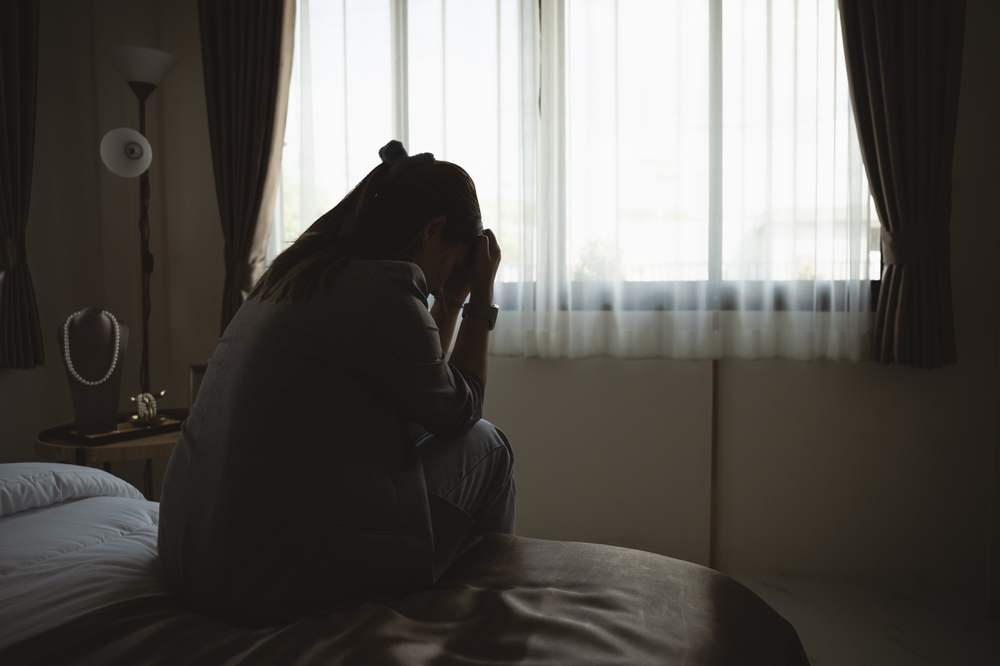If you grew up in the 1970s, you lived by a completely different rulebook than today’s kids. Some of these rules were spoken, others just understood, but all of them shaped our childhood in ways that would probably horrify modern parents. Let’s take a nostalgic (and slightly terrifying) look back at the strange rules that governed life as a 70s kid.
1. The Street Light Rule Was Absolute Law

When those street lights flickered on, you had exactly enough time to wrap up whatever epic neighborhood game you were playing and get your behind home before your mom had to yell your full name from the front porch. There was no cell phone to call and ask for “just five more minutes.” That yellow glow was nature’s warning bell, and every kid knew that ignoring it would result in the dreaded front porch standoff with Mom, complete with hands on hips and a death glare.
2. The TV Was A Once-A-Day Decision

Once you picked your show, that was it—you were committed, even through commercials. There was no pausing, no rewinding, and if you missed it, you missed it until summer reruns. Saturday morning cartoons were sacred territory—you knew exactly how long it took to grab cereal during commercial breaks, and you’d rather die than miss the beginning of Schoolhouse Rock. The worst offense? Someone changing the channel without a full family consultation and at least three rounds of debate.
3. Phone Calls Had Their Own Complex Protocol

First, no calls during dinner—period. If you were lucky enough to have a phone with an extra-long cord that could stretch to the hallway or closet for “privacy,” you still had to deal with the constant threat of someone picking up another extension. And heaven help you if you tied up the line when someone was expecting an “important call.” There was also the unspoken rule about how many times you could let it ring when calling a friend’s house (answer: exactly four rings, any more and you were being rude to their mom who had to answer it).
4. Bike Safety Meant “Try Not to Die”

Helmet? What helmet? The only rule about bike safety in the ’70s was basically “Try to land on grass if you can.” You rode your banana-seat bike with absolutely no safety gear, probably while carrying three friends on the handlebars and back pegs. Your parents’ only safety advice was “be home for dinner,” which somehow covered everything from basic road safety to what to do if a stranger offered you candy.
5. The Back Seat Was Basically the Wild West

Seatbelts were optional suggestions at best, and most of us spent long car rides sliding around on vinyl seats like hockey pucks, diving over the front seat to change the radio station, or lying in the back window like cats. Family road trips meant building blanket forts in the station wagon’s way back, and the only safety feature was Mom’s arm shooting out across the passenger seat when she had to brake suddenly—the original seatbelt.
6. Dinner Time Was Non-Negotiable

When Mom yelled “Dinner!” across the neighborhood (because somehow every mom had the vocal power of a giant), you had about 30 seconds to materialize at that table, no matter where you were or what you were doing. There was no “finishing this level” or “just five more minutes”—you moved with the urgency of someone fleeing a natural disaster. And once you were there, you sat until excused, ate whatever was served (no special orders at this restaurant), and if you said “I’m not hungry,” you’d better be prepared for the “there are starving children” speech.
7. The “Going Out to Play” Agreement

You didn’t need to specify where you were going (basically anywhere within a two-mile radius was fair game), but you did have to yell “Going out!” in the general direction of an adult and slam the door hard enough to make sure they heard it. That was your entire safety plan. Maybe you’d add “Going to Tommy’s!” if you were feeling particularly communicative, but that was optional and subject to change without notice. Your parents’ only requirements were that you showed up for meals and weren’t actively bleeding.
8. The Pool Rules That Would Terrify Modern Parents

The only real rule about swimming was “wait 30 minutes after eating” (which was treated with the seriousness of a CDC warning), but otherwise, pool safety was pretty much “try not to drown.” Nobody waited for adult supervision—if the pool was open, you were swimming. The lifeguard was technically in charge, but their main job was to yell “WALK!” every few minutes and blow the whistle for adult swim, which was universally understood as the worst 15 minutes of any kid’s day.
9. The “Don’t Touch the Thermostat” Commandment

The thermostat was Dad’s exclusive domain, protected with the kind of vigilance usually reserved for national secrets. You could be literally melting in July, and the response would still be “Put on a fan” or “Go play outside.” Touching the thermostat was a crime punishable by an hour-long lecture about money not growing on trees and the historical significance of wearing sweaters indoors.
10. The Encyclopedia Rule of Homework

Before Google existed, the house rules for homework were simple but strict: you got one shot with the encyclopedia set that your parents bought from a door-to-door salesman, and if your topic wasn’t in there, you had to get creative. The “World Book” or “Encyclopedia Britannica” was treated like a sacred text, and heaven help you if you bent a page or, worse, colored in any pictures. If your assigned topic wasn’t covered in those hallowed volumes, you either had to pick a new topic or make the treacherous journey to the library—and not during prime playing hours, because that was just wasteful.
11. The “Clean Plate” Law Was Strict

You sat at that table until you finished everything, even if it meant a three-hour standoff over canned peas or liver and onions. There was no “I don’t like it” in the 70s vocabulary, and “I’m full” was met with “You’re not leaving until that plate is clean.” The only acceptable negotiation tactic was moving food around your plate to make it look like you’d eaten more, but even that was risky because Mom had x-ray vision when it came to hidden Brussels sprouts.
12. The “Close the Door, We’re Not Cooling/Heating the Whole Neighborhood” Decree

It didn’t matter if you were just stepping onto the porch for three seconds or if it was the most beautiful day of the year—leaving any door open for longer than it took to physically move through it was treated as a personal attack on the family’s financial future. This rule was usually accompanied by detailed economics lessons about energy costs, complete with dramatic reenactments of your father’s reaction when the electricity bill arrived.
13. The Phone Number Memorization Requirement

In an era before smartphones, you had to keep an entire phone directory in your head. Your home phone number was literally drilled into your brain before you were allowed to leave the house alone, along with at least three backup numbers in case of emergency. You had to memorize your best friend’s number, your grandparents’ number, and that one neighbor who could be counted on to answer their phone and relay messages. If you were going somewhere new, you had to write down the number and physically carry it with you.
14. The “Get Up and Change the Channel” Physical Fitness Program

The youngest person in the room was automatically designated as the human remote control, required to get up and manually turn the dial through all three channels whenever someone wanted to watch something different. This task often involved careful adjustment of the rabbit ears antenna, which might mean standing in bizarre positions while everyone else yelled “Little bit to the left… no, your other left!”
15. The “Second-Hand Smoke Is Just Air Freshener” Mentality

Every adult space was perpetually wreathed in smoke, from long car rides with the windows barely cracked to family restaurants where the “non-smoking section” meant you were two feet away from the smoking section. Your clothes permanently smelled like your aunt’s Virginia Slims, and nobody thought twice about lighting up at the dinner table, in doctors’ waiting rooms, or during parent-teacher conferences. Adults would occasionally wave their hands in front of their faces if the smoke got too thick, but that was the extent of air quality control.








